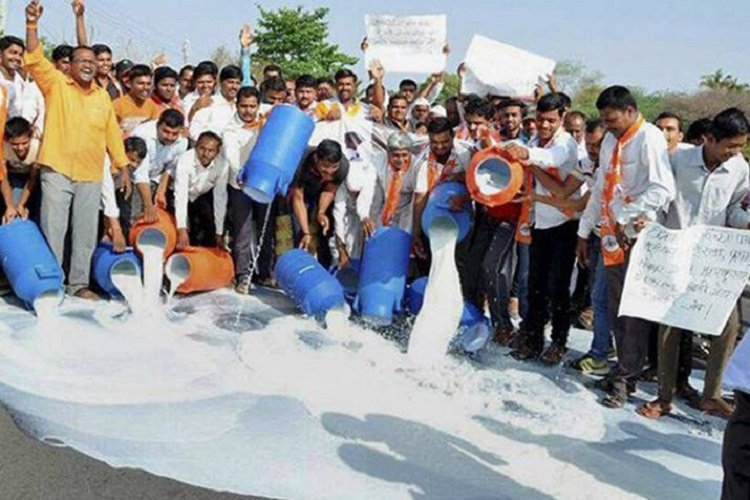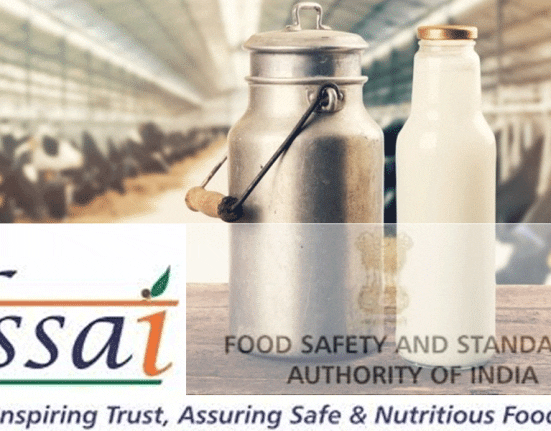In Maharashtra, milk farmers are currently receiving Rs 25 to 26 per liter for cow milk, down from Rs 38 per liter last year. This significant price drop has led to farmer protests. To mitigate any political backlash, the state government announced a subsidy of Rs 5 per liter in the budget presented on June 28. But what led to this situation? About a month ago, major milk brands like Amul, Mother Dairy, and Nandini increased the retail price of milk by Rs 2 per liter. In contrast, prominent South Indian brands such as Arokya and Dodla, along with some other companies, have recently lowered consumer prices, sharing the benefits of reduced milk procurement prices paid to farmers.
This issue is complex. Two key points are clear: farmers are receiving lower prices for their milk, and dairy companies are facing increased challenges. The crux of the matter is a significant drop in skimmed milk powder (SMP) prices, which have fallen from Rs 350 per kg in March 2023 to Rs 210 per kg now. The real crisis lies in the skimmed milk powder (SMP) market, and understanding its business dynamics is crucial. If no solution is found, this crisis will not only persist for farmers and the dairy industry but will likely worsen in the coming days. Companies that have increased milk prices are primarily doing so to offset SMP losses. Currently, the country holds a stockpile of about 300,000 tonnes of SMP, mainly with cooperative organisations like Amul and Nandini, as well as private dairy companies.
The production cost of this SMP stock ranges from Rs 300 to Rs 350 per kg. Selling it at the current market price would result in a loss of approximately Rs 700 crore. Annually, India produces about 500,000 tonnes of SMP. The SMP issue is predominantly linked to cow milk, which is becoming a larger share of the country’s milk production. Cow milk contains 3.5% fat and 8.5% solids-not-fat (SNF), which is SMP. With the increasing consumption of animal fat in India, fat Open. When fat is produced from milk, SMP is also a byproduct. To illustrate this, consider that 100 liters of milk weighs 102.8 kg and contains 3.5% fat, yielding 3.598 kg of fat. Additionally, with 8.5% SNF, this milk produces 8.738 kg of SMP. Currently, SMP in India is priced at Rs 210 per kg, generating Rs 1835 from 8.738 kg of SMP. Yellow butter, which contains 82% fat, is priced at Rs 350 per kg, translating to Rs 427 per kg of fat. This results in earnings of Rs 1536 from the fat. Combining these, dairy companies earn Rs 3371, or Rs 33.71 per liter, from the sale of fat and SMP derived from 100 liters of cow milk.
The expenses for milk processing, packaging, and other related activities for SMP and fat production amount to around Rs 3.5 per liter. Additionally, milk collection, commission, and transportation costs are also approximately Rs 3.5 per liter. Based on this calculation, dairy companies can pay farmers about Rs 26.71 per liter without incurring a profit or loss. This is the rate that private dairy companies in Maharashtra are currently paying to milk farmers. In February-March 2023, during a milk shortage, dairy companies in Maharashtra were earning between Rs 430 to Rs 435 per kg from yellow butter and fetching Rs 315 to Rs 320 per kg for SMP. This explains why they were paying farmers Rs 36 to Rs 38 per liter for milk last year. Currently, the global price of SMP stands at $2766 per tonne, approximately Rs 231 per kg at the current exchange rate. However, the domestic price is Rs 210 per kg, making export of SMP stocks from the country unlikely. Meanwhile, SMP production is expected to rise further during the upcoming flush season starting in September. The SMP challenge is less pronounced with buffalo milk, which contains 7% fat and 9% SNF. To produce the same quantity of fat from cow milk, cow milk will produce higher quantity of SMP. SMP finds limited consumption avenues in products like biscuits, confectionery, and ice cream, with minimal direct consumption by consumers.
Moreover, there’s limited demand for animal fat outside India, presenting a contrast to the situation faced by Indian dairy companies. Experts in the dairy industry suggest that India needs to find its own solutions to this issue. Suggestions include creating a buffer stock of SMP, exporting it to neighboring countries at competitive or subsidized rates, or investing in technologies that separate protein from SMP for fortification or other uses on a larger scale. The SMP crisis is expected to worsen, potentially impacting milk farmers with lower prices. This comes as milk production, particularly cow milk, continues to rise in India. Interestingly, this crisis does not affect the liquid milk business, prompting some of the South Indian companies to reduce milk prices for consumers as they procure cheaper milk from farmers. In contrast, Nandini in Karnataka and North Indian companies have raised milk prices to offset SMP losses.
Source : Rural Voice







